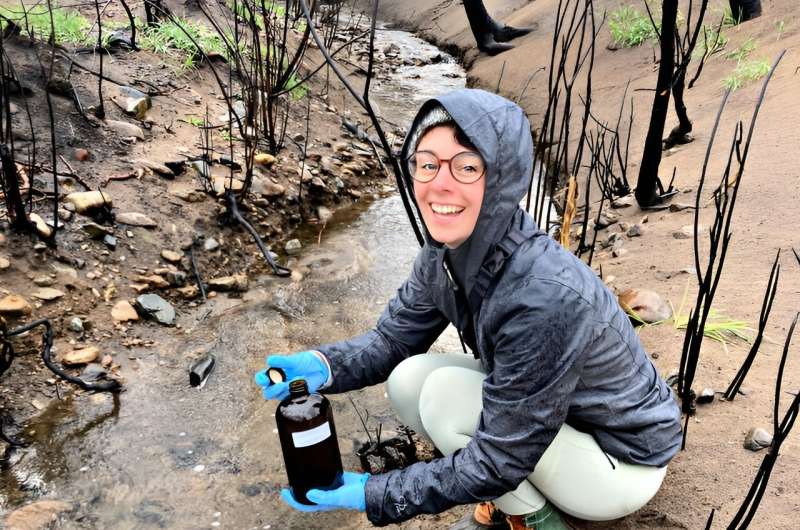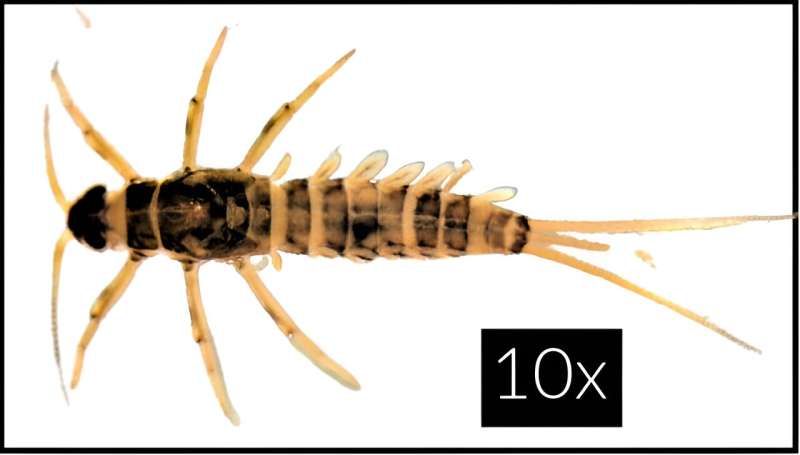
Last week, wildfires blazed across western Canada, turning the town of Jasper, located near Alberta’s Jasper National Park, into ashes. The local government estimated that the fire damaged or destroyed up to half of the town’s structures.
The wildfires carry a lesson for the Colorado Rockies and the people who live here. When wildfires move into urban spaces and burn down artificial structures, the impacts can be far-reaching, said Lauren Magliozzi, a biogeochemist in the Department of Civil, Environmental and Architectural Engineering at CU Boulder.
Magliozzi has studied how California’s 2018 Camp Fire and Colorado’s 2021 Marshall Fire impacted local water quality and ecosystem health. Her team found toxic metals, including copper, lead and zinc from building and car ash, can leach into streams and rivers, threatening water security and the health of aquatic organisms.
“We need a healthy ecosystem to have a healthy drinking water source,” said Magliozzi, also a researcher at CU Boulder’s Institute of Arctic and Alpine Research.
As climate change makes wildfires more frequent and intense, Magliozzi gives her take on how urban fires differ from wildfires, and what people can do to protect their homes and local ecosystems.
Are all wildfires bad for the environment?
Wildfires that primarily burn vegetation can benefit the ecosystem by releasing nutrients into the environment and helping it become more resilient against fires.
But when wildfires cross into the built environment and become what scientists call urban conflagrations, they are no longer beneficial. Rather than using mainly vegetation as fuel, the fuels of urban conflagrations are homes, vehicles, garbage, batteries and anything you might keep in your garage. Burning these materials releases different chemicals into the environment, and the efficient stormwater systems in urban areas can funnel those complex contaminants directly into our surface water.
What kind of contaminants can leach into the environment?
When we sampled surface water after the 2021 Marshall Fire, we found elevated levels of toxic metals like zinc and manganese in Coal Creek, which floats through Superior and Louisville where the fire burned. We were able to trace the source of these metals back to the built environment and to stormwater.
How are heavy metals affecting the ecosystem?
In Coal Creek, some toxic metal levels exceeded the aquatic life criteria limits set by the U.S. Environmental Protection Agency, even two years after the fire. These limits are thresholds beyond which aquatic life will be harmed.
We also examined specific organisms that lived in the creek. While algae growth remained the same in the burnt urban sites, many organisms that consume these algae decreased significantly. For example, we found that after the fire, the creek had fewer of the algae-eating mayflies that were once common there. The decline in the mayfly population suggested that the algae might be taking up the metals, which are then likely being transported through the food chain.
While sensitive organisms decreased, we also saw an increase in organisms more tolerant to poor water quality, such as leeches, in Coal Creek.

Should people who live near Coal Creek worry about their drinking water quality?
Fortunately, Coal Creek is not used for drinking water locally. But it would be very concerning if one of these urban conflagrations occurred next to a drinking water source.
But the impact of urban conflagration goes beyond just those mayflies in the creek. We still haven’t quantified some of the contaminants found in streams after urban fires, and we’re just starting to understand what organic compounds are being released into water systems after these fires.
Why have wildfires been spreading into urban areas more in recent years?
In the last two decades, there has been a huge increase in homes built in fire-prone areas. When communities move into these areas, we are also increasing anthropogenic activities, including discarded cigarettes and even power lines, that can cause fires. Extreme weather events like high winds in the case of the Marshall Fire and fires in Hawaii last year are also increasing urban fire risks.
Is there anything we can do to protect our ecosystems and homes?
One takeaway from our studies is that immediately after an urban conflagration, we can block stormwater from reaching our creeks and surface water.
In the long-term, preventing urban conflagrations is key. We need to improve community planning and look at how homes can be built so that they can be less flammable. Back in April, we had our power lines proactively turned off during a high-wind day. This is one way to reduce fire risks.
For individuals who live in fire-prone areas, practicing fire-wise landscaping and creating defensible spaces around our homes can reduce risks. Fire-wise landscaping can include trimming back trees, mowing down vegetation and creating a perimeter like a buffer of gravel around homes.
Provided by
University of Colorado at Boulder
Citation:
Q&A: Why wildfires don’t just burn, but can also pollute aquatic ecosystems (2024, July 29)
retrieved 29 July 2024
from https://phys.org/news/2024-07-qa-wildfires-dont-pollute-aquatic.html
This document is subject to copyright. Apart from any fair dealing for the purpose of private study or research, no
part may be reproduced without the written permission. The content is provided for information purposes only.
